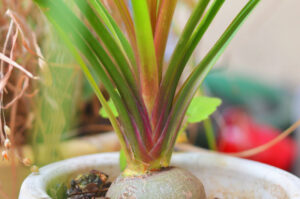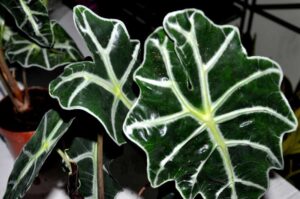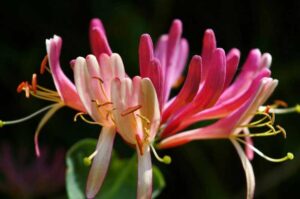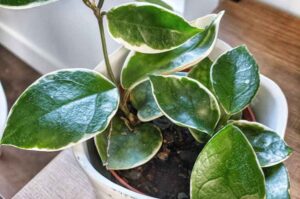Hoya polystachya- Complete Care Guide
Hoya is a slow-growing vine plant that is also known as a wax plant. They have thick and shiny foliage and make up great gifts as houseplants. These popular Australian plants have the reputation of being found all over the globe.
It’s a very good plant for beginners as it needs the minimum amount of care to thrive. Let us go through the care guide to know how you can take good care of your Hoya polystachya.
Hoya polystachya is native to places with bright light with moderate climates. To take optimum care of your plant, it needs to be within the temperature range of 65-80 degrees Fahrenheit with a minimum of 40% humidity. These plants don’t thrive too well when kept in a congested manner, therefore, they need to be packed loosely in well-drained soil. Since this plant is from a hot region, it can tolerate drought but overwatering might destroy the plant. Water the plant once only if you see that the top 2-3 inches of the soil feel dry.
Overview
Hoya polystachya is a very elegant climbing plant that grows from a basket that supports the entire vine. Even though slow-growing, these plants make quite long vines that can trail up to 4-10m long, which is 13-33 feet in height.
These climbers look beautiful as they grow in lovely stalks of green with white and yellow specks. Their flowers bloom in beautiful clusters of white with a reddish tinge and yellow stripes, having a sweet-spicy fragrance.
The leaves are oval-shaped with full green, smooth texture, and a waxy finish, which greatly adds to their beauty. The new foliage of the plant is red-hued and as it matures, it becomes greener.
At their fully grown stage, the plants are completely green in color, with a dark, waxy finish. Different varieties of Hoya have different shapes, textures, and sizes, however, for polytaschya, the leaves are oval, around 7-8 cm long, and dark waxy green.
Origin
Hoya polystachya hails from Singapore. These are beautiful, hardy, climbing vines that are slow-growing in nature. Since these are very strong and require minimum care, these plants can also stand strong against certain diseases, pests, drought, and other problems. Apart from the edges of the rainforests in East Asia, in places like Singapore, and Thailand, it is also found in the hard, rocky regions of Australia.
It was first found in 1770 and has a long-lived heritage that tails to the Apocynaceae family. These plants are commonly also called Waxing, Honey Plant, and Porcelain flowers.
How to take care of Hoya polystachya
Take a look at these guidelines to know how to take care of your Hoya polystachya.
Water Requirements
Hoya polystachya is a plant of hot origin. It can tolerate drought to some extent by overwatering can destroy the plant. Even though it has low water requirements, one important part of these plants is well-oxygenated roots.
These plants can easily adapt to low water conditions. The stomata of the plant close during the day to store water and open at night when there is less light, therefore less transpiration to breathe without losing much water.
When it comes to plants like this, underwatering is always a better option. As they are tolerant of a certain amount of draught, they can manage to survive with less water.
Overwatering will, however, completely damage the roots of your Hoya. Root rotting is a very common problem faced by many Hoya owners, especially beginners. So, if you are confused about whether or not you should water your hoya, check the requirement of water in the soil.
Some symptoms of overwatering are yellow leaves and leaves falling off the plant. If the plant is underwatered for a long time, there may be some problems. Therefore, water your plant thoroughly if you notice symptoms like crinkled or folded leaves, dried-out stems, etc.
Throughout the year, the plant required different levels of water.
In summer, when it is the plant’s growing season, the heat is high, therefore they need highly moist soil. Use the finger technique by digging one finger inside the pot to check if the first 2-3 inches are moist. If they are, you need not water.
Otherwise, if you see it is dry and crumby, water the plant. Mix the water well and don’t leave any stagnant water overflowing the pot. This is why well-drained soil is very important for Hoya polystachya.
Most Hoya species are dormant during winter. Polystachya is also one of them. These plants generally sleep during winter and use very less water. You need to change your watering schedule for polystachya in winter otherwise it might lead to overwatering.
Use the same finger method as described before to see if your plant needs water. Water the plant once or twice in 3 weeks. Otherwise, you can water only the root ball in some intervals to keep it moistened.
Some watering tips for your Hoya:
- If you get the watering technique right on your polystachya, the rest of it is game. Check your plant a few days after watering to see if it needs more water.
- Study your plant, and learn their signals. Yellow leaves mean overwatering whereas crinkled leaves mean underwatering.
- Hoyas are generally sensitive, so, use filtered water or rainwater. The contaminants of tap water or chlorine-infused water can kill your plant.
Lighting
Hoyas are generally low light plants, however, in their blooming season, they require strong, indirect bright light. Different varieties of Hoya enjoy the setting of sunlight. While species like Hoya australis can enjoy more harsh sunlight due to its natural ability to tackle the hot climate of rocky terrains, hoya polystaschya can survive well in both heat-loving as well as dim light situations. Also, they do require quite high humidity, which we will discuss in a separate point.
Hoya polystaschya is among the light-loving section of the Hoya spectrum. They generally enjoy a good amount of indirect sunlight, and in northern regions, they can even spend some time under direct light to thrive better.
Generally, lighting is not very difficult to adjust in plants like Hoya. Increase the lighting of your Hoya plant only when you see that the plants are not flowering. Less light can, however, make the region cold, causing the leaves of the plant to wilt.
Since the plant has thick, hardy, waxy leaves, it is not very easy for them to get bleached or lose color in sunlight. So, if you want to see your Hoyas bloom beautifully, increase their sunlight only during the growing season.
Here are some lighting tips for your Hoya:
- Keep your Hoya away from too much direct sunlight as it can burn the leaves of the plant.
- Artificial glowlights are a great option to find the optimum light setting for your plant.
- If you live in the northern regions, you can keep your Hoya under direct sunlight for some time. However, in areas like Singapore, where the sun is harsh and direct, indirect lights are preferred.
Soil
Just like any other plant, if you don’t provide your plant with the right soil, you are close to losing them. The plant requires soil with very efficient draining. It gets difficult for the roots to stay healthy and oxygenated in soggy situations. The plant does not get enough room to breathe.
So make the soil of your plant of the perfect consistency, the best option is to mix soils. Don’t make it too soggy, or too dry. The soil should be able to drain efficiently and keep the ends of the plant loose, and at the same time stay moist so that the plant doesn’t dry out.
Use mixes like combinations of peat, coco coir, perlite, compost, orchid mix, and cactus soil. This will help you improve the fertility of the soil. You can use orchid barks to get the optimum soil texture which will help your plant thrive.
Here are some suggestions you can use to get the best kind of soil for your Hoya polystachya.
- Use equal parts peat/coco coir, perlite, and orchid bark.
- Adding worm casting will improve soil fertility.
- You can mix peat moss and perlite. Adding coco coir is optional.
- Cactus soil and orchid mix along with perlite will give your soil great nourishment and make for the optimum soil mix.
Temperature
Hoyas are tropical plants. They thrive in a temperature range between 65-80 degrees Fahrenheit with 40 to 60% humidity in their growing season. They can tolerate drought to some extent but when it comes to cold regions, they are not very resistant to frost.
Most hoya species are dormant in winter, only some that grow in the great norths are resistant to it. Yet, it is common for them to wither in winter. Throughout the year, it is alright to keep your hoyas out, however, if the temperature falls below 10 degrees Celsius, you should bring them inside. An ideal inside spot for your Hoyas is a bright south-facing sunny window.
Here are some tips to keep the optimum temperature for your Hoya:
- If the plant’s temperature falls below 47 degrees Fahrenheit, increase the temperature by artificial means.
- The optimum temperature is 68-70 degrees.
- Avoid drastic changes in temperature or your plant might go into shock.
Fertilizer
You don’t generally need to fertilize your Hoya that often, but light feeding in the growing season is more or less helpful for the growth of the plant. Organic fertilizers are the best for your Hoya polystachya.
Synthetic fertilizers damage the quality of your plant. They might even burn the roots of your hoya. They have a more concentrated formula. When you are applying it, you can try to weaken the formula’s strength by adding water.
Here are some fertilizing tips for your Hoya:
- You can use an orchid folier fertilizer
- Make sure not to use any toxins as it may damage the quality of your plant
- Water the soil to remove all toxin buildup but also make sure to drain it before it clogs.
Repotting
One great thing about Hoya polystachya, or any breed of Hoya is that it doesn’t need to be repoted that often. Hoyas can be repotted every two years or so, or when the plant becomes too root-bound.
Since hoyas are vining plants, they often face root disturbances. But luckily, they are also epiphytes. They live in naturally borrowed space and can survive being root-bound. It is in their nature to be a little entangled in a cozy spot. You should repot only when the pot is filled and the roots are coming out of the soil.
Here are some Hoya polystachya rooting tips:
- The best time to repot your plant is just before the growing season, typically, spring.
- You don’t have to go too big. When you repot, only increase one pot size at a time.
- Before the day you repot, water your plant diligently. It is easier to work with moist and pliable roots.
- After you repot the roots, don’t feed the plant for the next 6 to 8 weeks. This might cause you to shock by the new tender roots.
Propagation and Regrowth
The propagation step is quite easy in the case of Hoyas. just put the cutting into clean and dechlorinated water. Give it a good amount of warmth and indirect light. After a few days, the cutting will start to grow a root system and eventually sprout into a plant.
In the next step, you have to plant the fresh cuttings or the rooted sprouts. These are the steps to do it.
- Fill the tray with a sterile mix of perlite, vermiculite, or clean sand to enable good drainage. Water the plant thoroughly and set it aside to drain.
- Cut a fresh portion of the stem including a few leaves and nodes to initiate the propagation process.
- Remove the leaves in the lower section to ensure the nodes are not submerged in the soil.
- Put the point in a warm place with plenty of indirect sunlight and water often for speedy growth. However, it might take the plant a good amount of time to grow, as they are slow-growing plants.
Pests and Diseases
Some common pests in Hoya are aphids, scale, spider mites, and thrips. One of the most deadly pests found in this plant, specifically, very common in Hoya polystachya is a nook-hiding mealybug. These are similar to small patches of cotton and are formed on the underside of the plant, in the joints of the foliage.
To prevent this, a weekly shower works tremendously well, as these bugs are very weak and get easily washed off with the help of water. Also, watering helps with the destruction of spider mites. Inspect your hoyas often to see if there are any pests present in the plant. In case there is, starting the infestation process at an early age is helpful for the plant.
Use horticulture oil and insecticidal soap to wash your plants and bring the bugs under control. You can also use diluted rubbing alcohol on the leaves.
Apart from common pests, your plants can be threatened by diseases like Fungi due to harmful root rot. This is why you should check to overwater. Misting should be avoided for this very reason. Also, make sure to have good airflow so that the plant gets enough oxygen.
Final Thoughts
This was a comprehensive guide to take care of your Hoya Polystachya. Follow these steps to grow your plant beautifully and make it thrive. Keep it in a bright place with a good amount of indirect sunlight and water, only when needed. Keep the temperatures moderate, with averagely high humidity, about 40%. Once grown in these conditions, these plants are a treat to look at.






